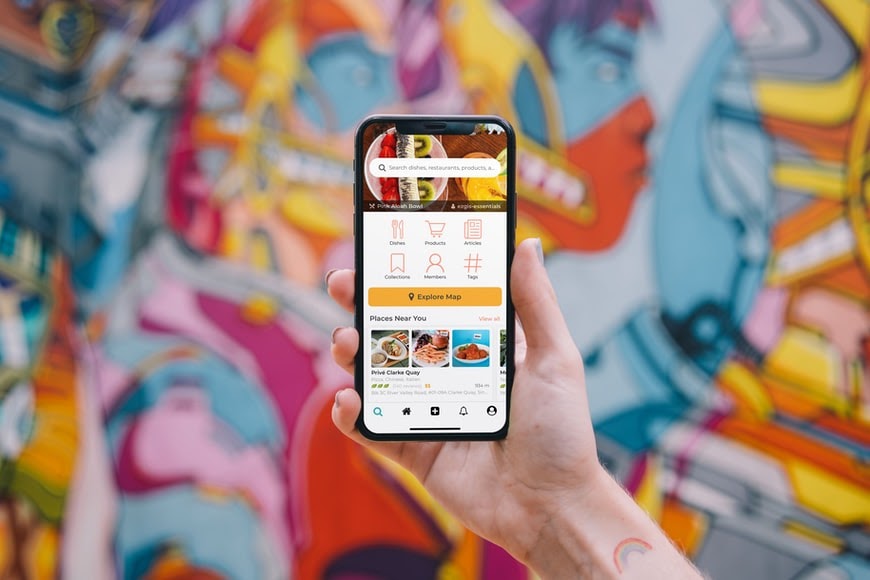The mobile app market is growing by leaps and bounds. Over 80% of consumers worldwide own a smartphone. The global app spending in the first half of 2021 almost reached $65 billion — 24% more than a year before! This is a highly competitive market where promotional strategies are constantly evolving. The way your app is developed can make or break it, too.
Following a well-structured cycle is absolutely crucial. Reputable mobile app development firms use time-tested methodologies to achieve their goals on time, on specs and on budget. Here are 10 crucial steps in the process of building an application:

Step 1. Ideation Phase
Every successful project begins with an idea. Your app must address specific pain points of customers and bring value (for example, improve their shopping or interaction with the client’s brand, help them save time or money). The tech team must determine the features that can deliver these benefits.
Step 2: Identification and Clarification
Using audience insights and other research data, the project team must clarify particular development aspects. These include:
- Target users
Your app must be accessible and visible to users who are interested in your products or services. This is the cornerstone of success. Your perception of the target audience will drive subsequent development efforts.
- Supported OS and Devices
Do you need to craft a cross-platform app or focus on iOS or Android exclusively? In addition to regional differences in OS usage, businesses ought to consider the hardware preferences of their target audience, battery life, peripherals, and other related aspects. Different platforms and devices support different coverage, performance, and features.
- Revenue Model
How is your app going to generate profit? Multiple approaches are now available, from in-app advertising to subscriptions. For example, you could charge users for downloading your app or provide the most valuable features for a recurring fee.
This model will determine the approach of your developers. They must create features that will motivate users to spend money on particular aspects of their app experience. At this stage, your business must have a clear understanding of its budget and costs associated with all key stages: development, marketing and release.
Step 3: Designing the App
High-quality UX and UI translate into higher discoverability, so more users will find out about your product and wish to download it. In their work, designers comply with the standards of the chosen platforms and devices. The quality of user interface can seal the fate of your app. You want a product with impressive usability, a mobile extension of your brand that will make an instant impact on the user.
Step 4: Choosing Between Native, Web, or Hybrid
Based on your company’s goals, budget and target audience, developers may create native, web-based or cross-platform solutions. The first path is the most expensive and time-consuming. On the upside, it lets you deliver superior user experience on a specific mobile OS.
Web apps work within mobile browsers, so they are quicker and cheaper to build. Moreover, they are compatible with different platforms. On the downside, web-based applications are less powerful. They may be built on HTML5, CSS, or JavaScript code.
Finally, you can get the best of both worlds with a hybrid product — a powerful app that will work on different platforms using the same code base. The developers will augment the code with native language to access native APIs and deliver unique features.
Step 5: Make a Prototype
Your team can now produce a “draft” version of your app with basic functionality. This is known as MVP, or Minimum Viable Product. It lets you sell your idea to potential buyers and collect available feedback. You will understand if attracting investors and finding licensees is possible, and understand what changes to make before a full-scale launch.

Step 6: Integrate Analytics
Every app creator must keep track of behavioral patterns. How are customers interacting with your app? Tools like Google Analytics, Firebase, and Preemptive accumulate a wealth of insights. The latest technologies, including predictive analytics, will help you make your product highly marketable.
Step 7: Test and Incorporate Feedback
Releasing the beta version of your app, gives you an opportunity to collect feedback from the target audience. In addition to reducing the risks of full-scale launch, this stage lets you boost your visibility in the app store. You can get an early bird advantage and attract potential customers sooner.
It is crucial to identify the right audience for beta tests. Based on early market research, you must clearly define this group. Before letting potential customers evaluate your app, conduct alpha testing to identify and eliminate bugs.
Step 8: Release/Deployment
You need a clear schedule to ensure a smooth release. Your plan must cover all versions for both test and live environments.
Step 9: Capturing the Metrics
To assess user interactions, you can borrow some methods from web analytics. For example, funnel analysis will show you why potential customers fail to complete specific actions, such as in-app purchases. By measuring social sharing, you will understand which aspects attract the most attention.
The data acquired through tracking of location and demographics will allow you to correct your buyer personas. You gain an in-depth understanding of who uses your app, how and in what contexts.
Step 10: Upgrade Your App
Based on relevant metrics, you need to upgrade your product with novel features and enhancements. Continuous innovation is crucial for usability in the long run. Otherwise, you risk losing customers to competitors. In addition, your business has to keep up with the guidelines imposed by its chosen platforms. Do not allow your app to stagnate.
To Sum Up
These are important steps in the development of any application. As you can see, this process does not stop with the release of the full version. Any business must keep its mobile products updated to support long-term success. Multiple factors will contribute to the performance of your app, but a well-structured development process is one of the main prerequisites.

